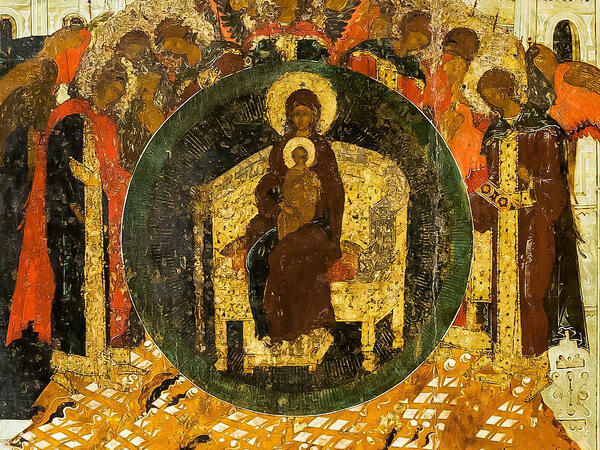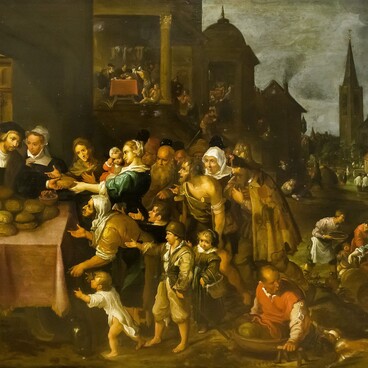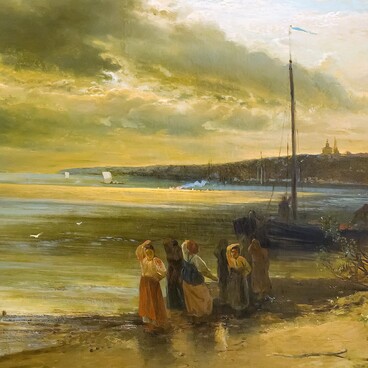These are the words calligraphically inscribed against the gold background in the upper part of the icon.
The icon was painted in the first half of the 16th century. The painter depicted the Mother of God and the Child Jesus seated on the altar and surrounded by a halo of glory (glory is a particular glowing which is used to signify saints and is usually shown in the form of a circle or an ellipse). Seated on her lap is the Christ Child. Around the altar is the choir of the Archangels.
The entire upper part of the composition is depicted on top of a mountain to indicate that it belongs to the heavenly world above. According to Holy Father Gregory Palamas, the Mother of God and the Child are in the mental paradise.
There were two types of the icon “All of Creation Rejoices in Thee” in the Old Russian iconography. Icon painters from Moscow depicted Saint John the Forerunner and Saints Cyricus and Julitta standing in front of the altar with the Mother of God and the Child. In Novgorod, the upper row of these icons featured righteous men and nuns with the Venerable Mary of Egypt. The icon “All of Creation Rejoices in Thee” from the museum’s collection contains features of both Moscow and Novgorod iconography.
In the middle of the icon, the painter depicted the images of Saint John the Forerunner and Saint John of Damascus. They hold unrolled scrolls containing some of their sayings.
The bottom of the icon depicts the selected saints. They are grouped according to their hierarchy. From left to right, the artist depicted the Desert Fathers, venerable saints, hierarchs, prophets and forefathers. In the central-right part of the icon are the Apostles, faithful saint princes, martyrs, righteous women and nuns with Saint Mary of Egypt.
The icon is characterized by the balance of the upper and lower parts of the composition. The master depicted the heavenly world as very distant from the life on Earth. The wide space between the two worlds is taken by hills covered with grass.
Unlike other works of the same period, this icon is particularly colorful. The painter chose a complicated mosaic pattern with large colored highlights (highlights are the light-colored lines drawn according to particular rules in order to depict the dimensions of figures and the folds on clothes).
The icon was placed in the bottom tier of the iconostasis of the Assumption Cathedral and Monastery in Sviyazhsk as constructed under the supervision of Herman of Kazan. The icon entered the museum’s collection in 1989.



